Formula 1®
DHL Fastest Lap Award: F1 lap times under scrutiny
The idea was that the 2017 Formula 1 cars should be wider, more beautiful and above all faster. The new regulations gave them broader bodywork, significantly wider tires (hence more grip) and better aerodynamics. It was calculated that lap times would come down by around four seconds. However, the benchmark times used were from 2015, as the new regulations were drawn up early in 2016 before any comparative values for that season were available.
Take part in the DHL Fastest Lap Game
DHL-In-Motion.com has now come to a verdict on the effect of the current rules. Were the cars actually faster by several seconds? On which tracks were the differences particularly noticeable? And were there other factors in play? To do this, we have compared ten of the eleven races contested so far this season with the equivalent fixtures in previous years. Baku’s street circuit did not feature on the 2015 calendar and therefore offers no comparative data.
Australian GP
Albert Park in Melbourne is now one of the classic venues on the Formula 1 calendar. This non-permanent track cannot be described as a typical street layout, but it is also quite different from any of the modern purpose-built circuits. It is characterized by its many corners, all completely different in nature.
When Lewis Hamilton set a time of 01:22.188 minutes to claim pole position this year, a degree of disappointment was expressed. What? Only 1.7 seconds faster than last year? That may have been true, but the difference to 2015 was exactly 4.2 seconds, i.e. within the zone that the new regulations were supposed to achieve. So the major advance came between 2015 and 2016, despite the fact that the cars had barely changed. How could that be?
It was a phenomenon that would become apparent on subsequent race weekends, too. The reason can be found in the modified tire regulations for 2016. Instead of just two tire compounds per race as in 2015, Pirelli had been asked to bring three. In Australia, this meant that the medium and soft tires from the previous year were now supplemented by supersoft. Lap times tumbled as a consequence.
For 2017, Pirelli went even further towards the soft end of the spectrum, supplying the ultrasoft instead of the medium tire. But the Italian manufacturer applied the new rules conservatively and built the tires harder than in the previous year, so that the ultrasoft was in effect equivalent to the supersoft of the previous campaign. Consequently, the 1.7-second improvement on 2016 was only to be expected, although external factors such as weather conditions must always be taken into account.
The target of shaving four seconds off the 2015 time was in any case met. What really impressed was the race pace: the DHL Fastest Lap set by Kimi Räikkönen was 4.4 seconds faster than Lewis Hamilton’s 2015 record.
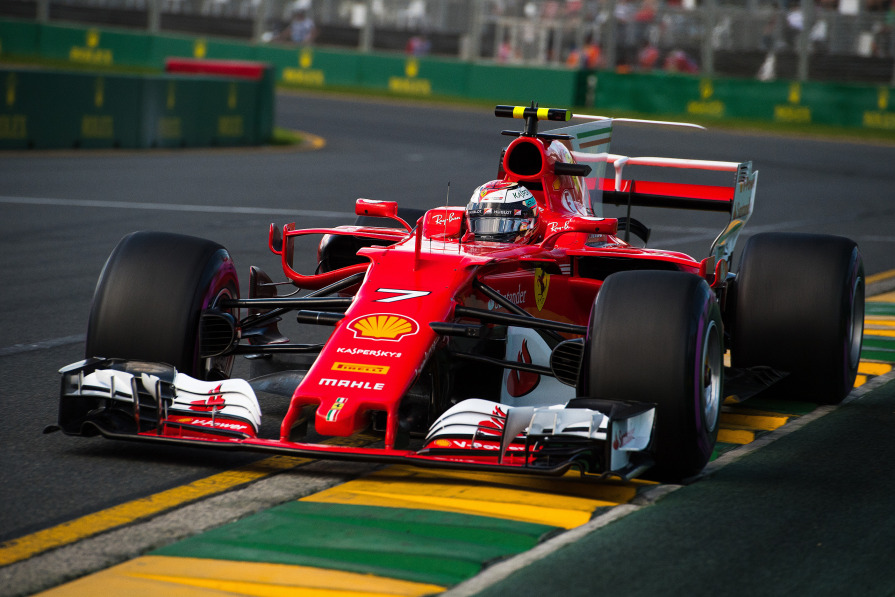
Chinese GP
The Shanghai International Circuit has one particular feature that is not especially favorable to the new cars, namely an exceptionally long straight. With their extra width, the cars are subject to greater drag, which reduces their top speed on the straights. The difference in qualifying compared to 2016 was five km/h. However, that did not mean the target could be ignored, especially as sectors one and two essentially consist of corners.
This year’s Chinese GP was a somewhat wet affair, especially on Friday. However, the track was dry for qualifying on Saturday, and the times were outstanding – 01:31.678 minutes set by Lewis Hamilton, and Sebastian Vettel might even have improved on that if he had not made a mistake in the final sector. In contrast to Australia, the same tires were used for the Chinese Grand Prix as in 2016, i.e. slightly harder compounds.
In China, the difference between 2015 and 2016 was less pronounced, although the race pace was certainly much faster. This year saw further progress, with Hamilton almost seven seconds faster in the race than two years ago. Verdict: Objective achieved.
Bahrain GP
Racetracks located in desert terrain always present a special challenge, as the sand that drifts onto the surface can affect performance, and the wind can blow it around unpredictably. The layout of the Bahrain International Circuit is characterized by several long straights and a winding middle sector. Consequently, the difference is not as pronounced as at the previous two venues.
Valtteri Bottas’s qualifying lap for pole position was not even a full second faster than the one set by Lewis Hamilton in 2016. And the reason for that can be found in the long straights with lower top speeds in combination with the use of the same tire compound as in 2016, albeit to a slightly harder formula. But in comparison to 2015, the improvement by almost four seconds is again within the target zone. The phenomenon first noticed in Australia is once again recognizable, when the advance from 2015 to 2016 was particularly striking, with qualifying times more than three seconds faster. No wonder: just as in Melbourne, the new supersoft compound was brought along for the 2016 Bahrain GP, as permitted by the tire regulations for that year.
Russian GP
Russia presented a similar scenario to the one observed in Bahrain. The track that snakes its way around the Olympic park in Sochi has several straights but few fast corners. However, thanks to the tires, the notional speed difference of four seconds compared to 2015 was also achieved here.
Sebastian Vettel was just about four seconds faster in qualifying than Nico Rosberg two years previously, when the event was also held in the autumn. In a change from China and Bahrain, Pirelli brought along the ultrasoft compound for the exceptionally smooth track surface at Sochi. But the tire with the purple markings came in for some criticism due to its hardness. Even so, the tires were directly comparable with the ones used in the previous year, and an improvement of 2.3 seconds was registered. Significantly more so than in Bahrain.
Spanish GP
Barcelona provided the cars with their first really serious test. The Circuit de Catalunya is an excellent parameter for the performance of a car, in that it offers an extremely long straight plus many fast and also slow corners. During the winter tests, Kimi Räikkönen came close to breaking the all-time track record with a time of 01:18.634 minutes. On the race weekend, however, the record remained intact.
The 01:18 mark would have to wait for a future occasion as Lewis Hamilton peaked at 01:19.149 minutes. Whereas all the tires had been made available during the test week, Pirelli were unwilling to take any risks for the Grand Prix itself and brought along the three hardest compounds as in the previous year. Even so, Hamilton’s time was the fastest lap on a Formula 1 weekend hosted by this circuit. Improvement over 2015? A satisfying 5.5 seconds! The pace throughout the race was also markedly faster than in previous years. Spain had at last shown what the new Formula 1 cars were capable of.
Monaco GP
Monaco could not compete with the Spanish GP for speed, which comes as no surprise. Although the tight corners call for plenty of grip, the Principality is lacking in fast corners, which means that aerodynamics cannot play to their full potential. The lap times in Monaco were impressive nonetheless.
The best time in the first practice session was already faster than the pole time of the previous year. Yet there was still more in reserve, because the fastest lap on Friday was set by Hamilton who otherwise experience a disappointing weekend in Monaco. Indeed, it was Kimi Räikkönen who booked pole position the following day with a time of 01:12.178 minutes.
For the reasons given above, however, the improvement on 2015 was not three seconds, and compared to 2016, it was it was a “mere” 1.5 seconds. An additional factor here was the tires: using the same classifications as in 2016 meant that they were harder.
Canadian GP
A very different track configuration awaited Formula 1 in Montreal. The Circuit Gilles Villeneuve is known for its long straights where the cars go at full throttle – not really promising territory for the new generation of F1 car. And this also manifested itself in the times. After Monaco, Canada has returned the smallest difference so far this season.
Compared to his own pole time of 2015, Lewis Hamilton was 2.9 seconds faster this season. Straight line speed – which is decisive in Canada – was around five km/h slower compared to qualifying two years ago, and approximately two to three km/h compared to 2016. In 2015, however, there were no ultrasoft tires available.
The fact that a difference of almost three seconds emerged from a relatively short circuit time of 71 seconds says a lot in favor of the new cars. In the race, on the other hand, the difference was even narrower than in Monaco – just 2.4 seconds between the 2015 and 2017 DHL Fastest Lap times.
Austrian GP
On the track with the shortest circuit time and with just nine corners, the difference could surely not be that great? Oh yes it could! In qualifying, pole-sitter Valtteri Bottas came very close to breaking the 60-second barrier. The straight-line speed factor suited the cars better than in 2015.
Unlike in Canada, where the highest speeds of the past three years were clocked in 2015, Austria came in with the lowest. Top speed was therefore not going to count against the new cars but rather work in their favor. The surface of the Red Bull Ring at Spielberg has also been completely re-laid since the race two years ago, which obviously means more grip. In light of the above, the 4.2‑second difference is hardly surprising.
Last season, times were also much faster, although the fastest lap in qualifying was set in Q2 before the rain came. This was a 01:06.228, which is almost precisely two seconds slower than this year. But compared to 2016, the top speeds clocked this year were again lower.
British GP
It was almost as if Silverstone had been designed to bring out the best in the new cars, with the left-right-left-right-left complex at Maggots, Becketts and Chapel especially suiting them. The corner at Copse suddenly manifested itself in a new light. The difference was also reflected in lap times.
Lewis Hamilton was an outstanding 5.6 seconds faster on his pole lap this year than in 2015 – an amazing achievement. This is also due in part to the fact that the supersoft tire was used for the first time this year at Silverstone. Pirelli had originally intended to bring back the three hardest compounds, but after taking on board the criticisms of the tires being too hard, they opted to go one level softer. This allowed the drivers to let rip. In the race, the difference was even more striking. Hamilton’s DHL Fastest Lap was 6.4 seconds quicker than two years ago.
Hungarian GP
The last race before the summer break took place at the Hungaroring, a track which is one long sequence of corners. Above all, this calls for grip and downforce, qualities which the new cars have in abundance. And this is confirmed by the lap times.
Sebastian Vettel drove a peach of a lap in Q3 – 01:16.276 minutes – a time previously considered beyond the bounds of feasibility on this track. Compared to 2015, it was 5.8 seconds faster. And even compared to the previous year, the difference of 3.7 seconds was huge, because there are hardly any long straights in Hungary, which would otherwise compromise lap times because of inferior top speed.
Verdict: Mission accomplished
As a result of the new regulations, Formula 1 has almost fulfilled its objective of reducing lap times by four seconds compared with 2015. A new track record has been set at almost every race venue this season – in Spain at least for a regular Formula 1 weekend. Nevertheless, there are circuits on which the difference is greater than on others.
The new cars have got slower with regard to pure straight-line speed. So when they are going flat out, they are not the fastest F1 cars of all time. But downforce has always been an essential component of Formula 1. And the new rules show the extent to which progress has been made, especially on aerodynamically demanding tracks. For example, Hungary produced a difference of almost six seconds between the fastest lap in 2015 and this year.
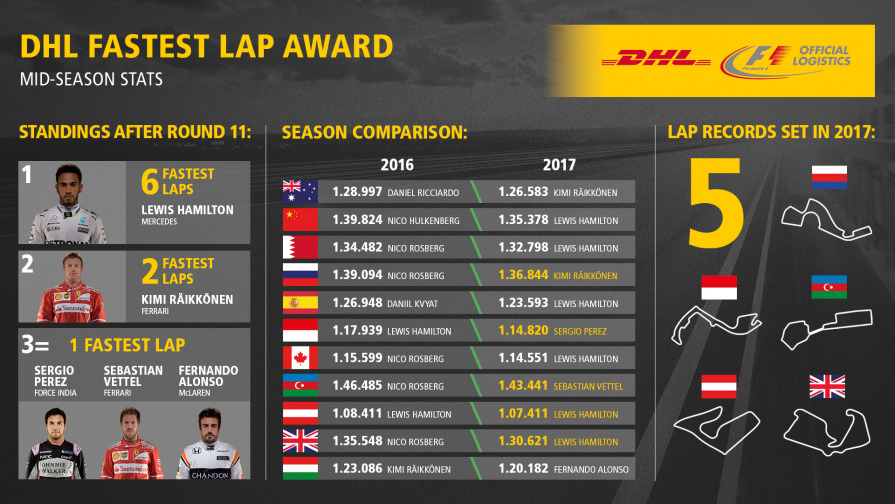
However, it is not just the cars that make the difference. In 2015, there were only two tire choices per race, but since last year, there have been three. Consequently, the advance from 2015 to 2016 was in part more dramatic than the one from 2016 to the current season. And the simple reason for that is because Pirelli’s tires were significantly softer last year and a previously unused, softer compound was available on most race weekends.
Across the board, the drivers have claimed that the cars are now more difficult to drive than in previous years. This may not reveal itself over a single lap, but the fastest race laps show that drivers are much quicker than two years ago – despite fuel economy and tire management. The sport is making more demands in terms of driving skills, and to that extent, the regulations have justified themselves.

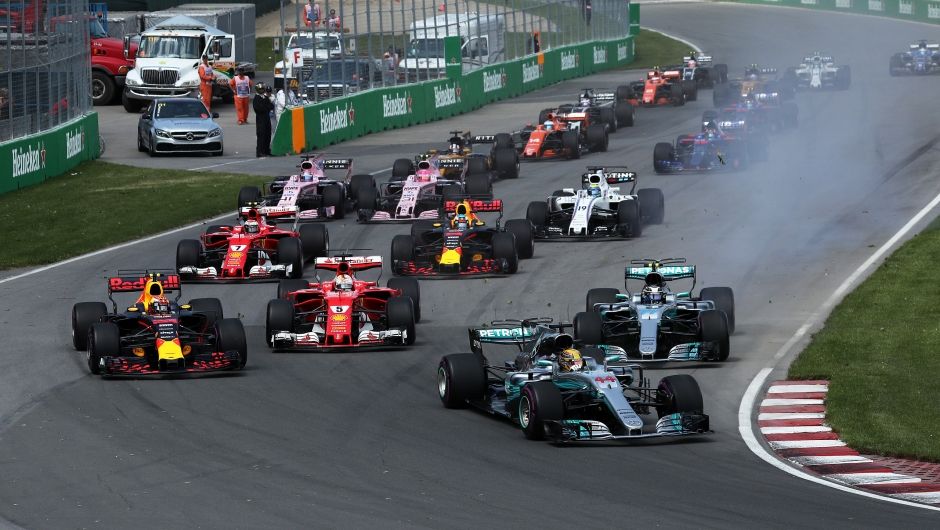
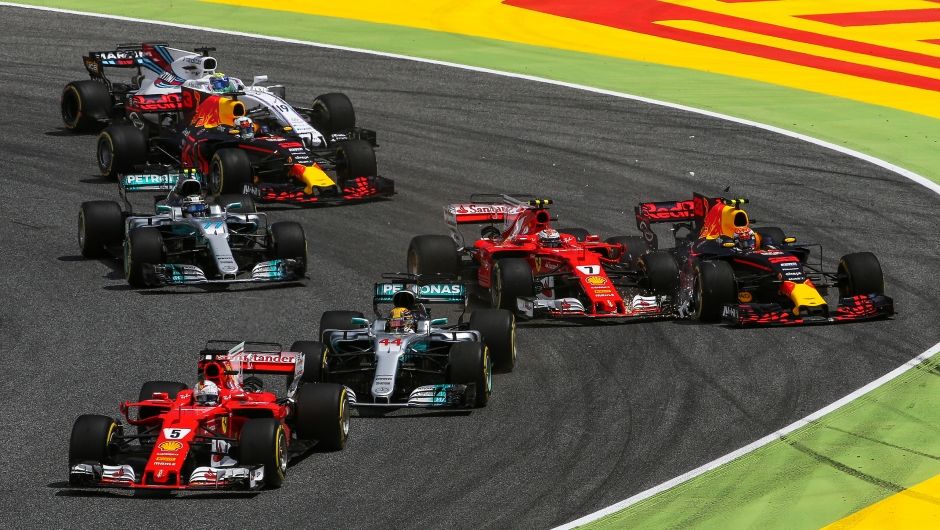
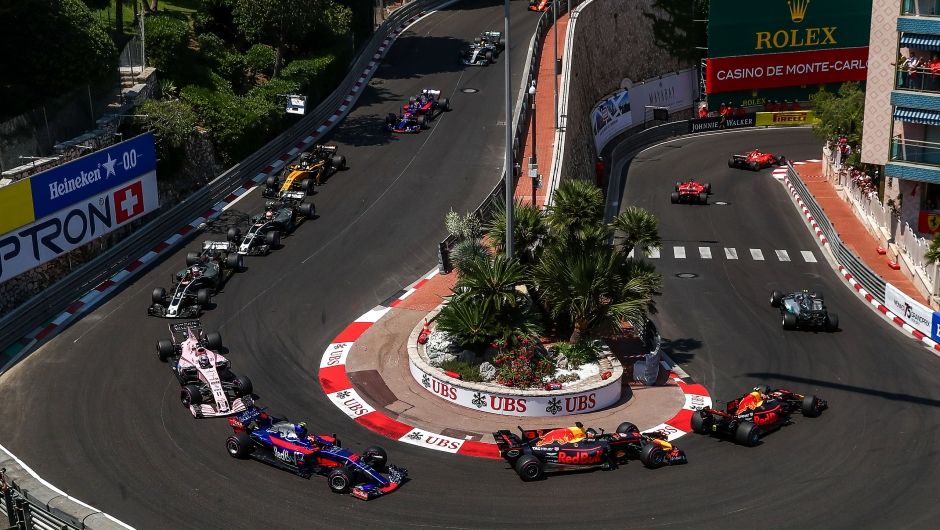
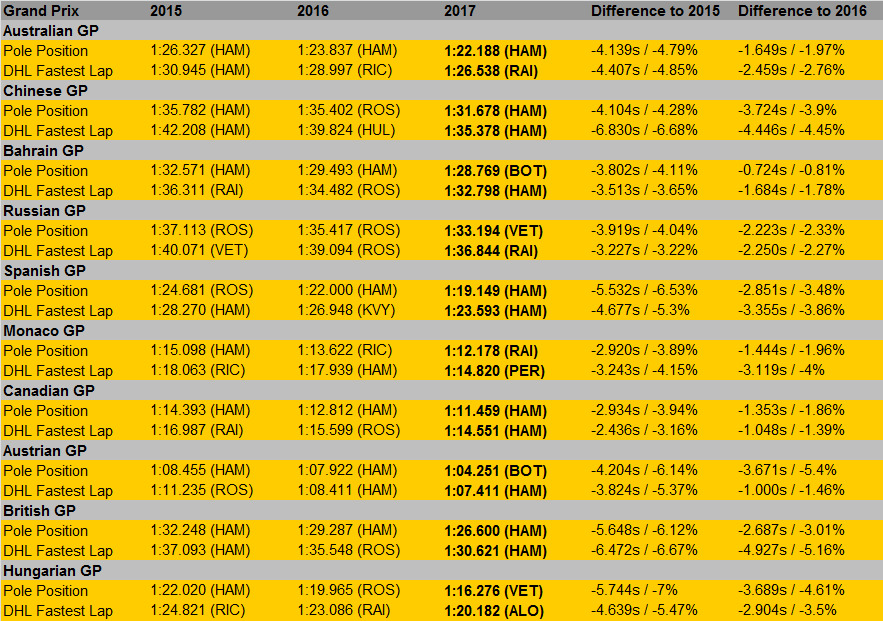
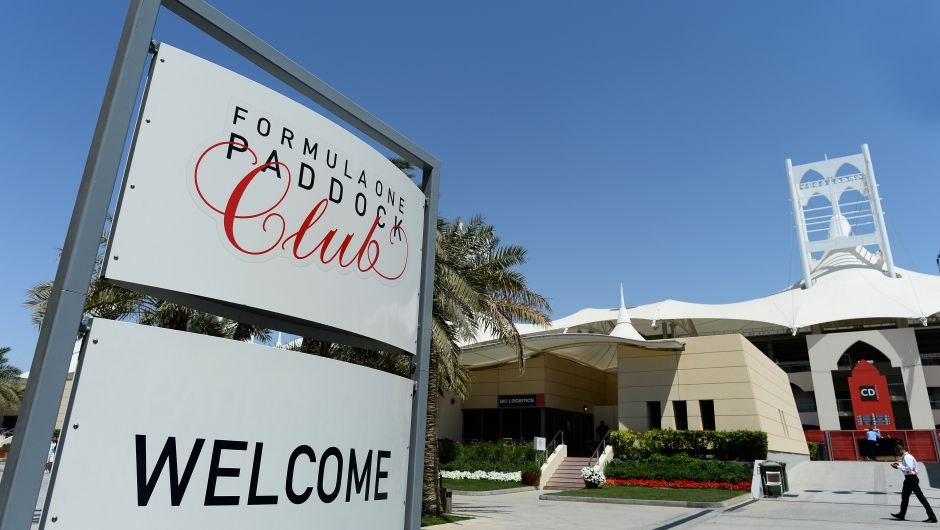
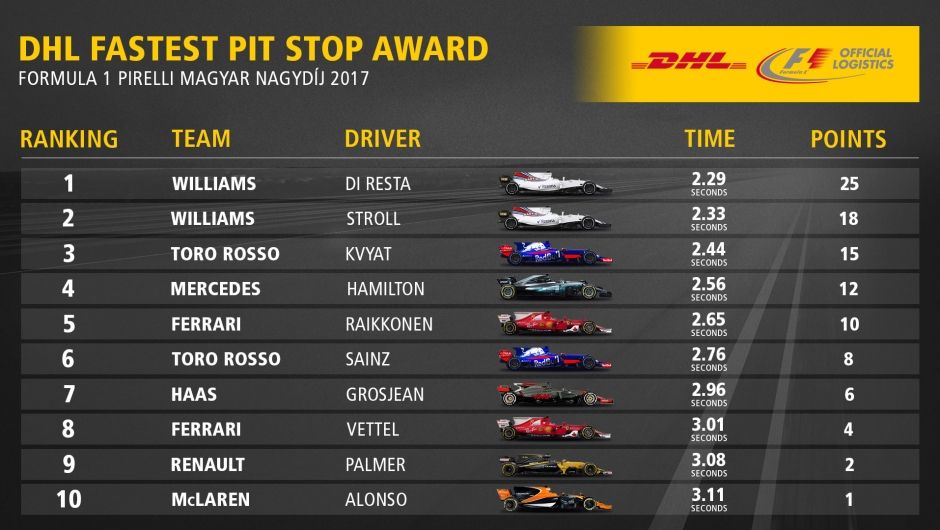

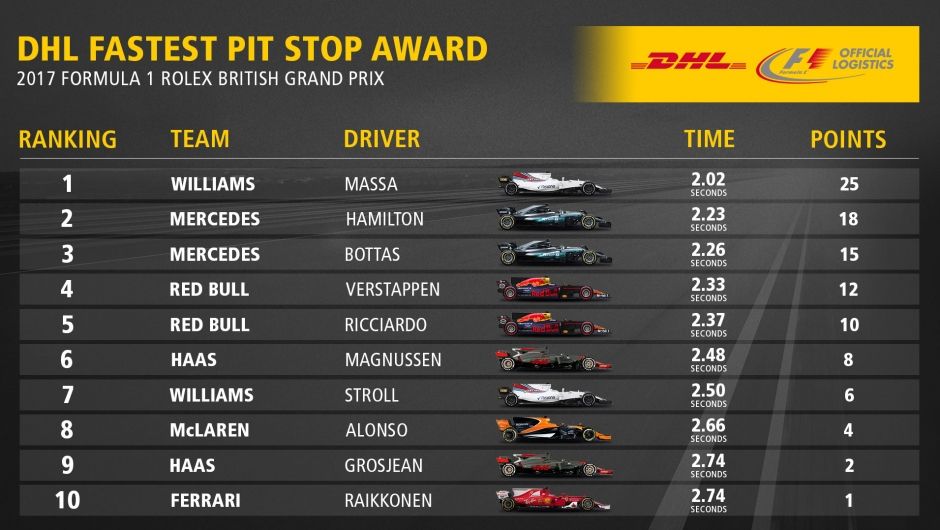
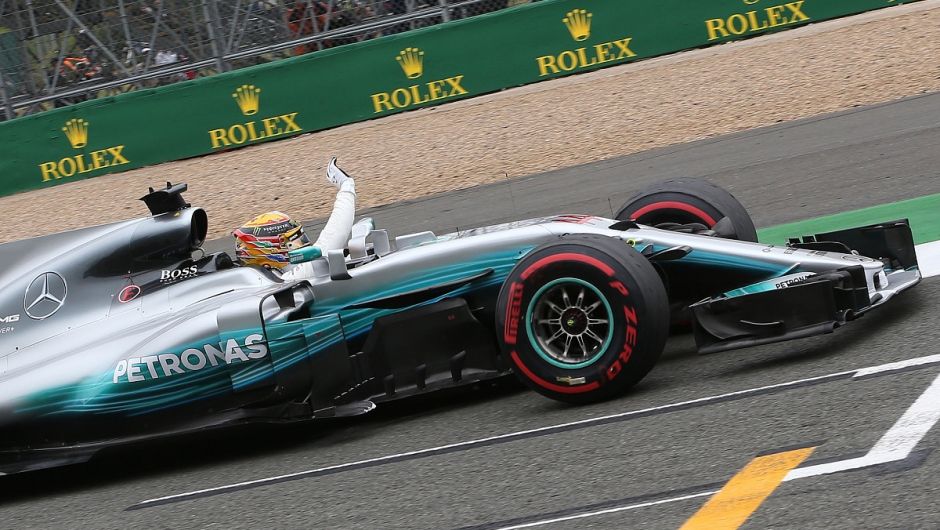
Content from disqus has been blocked because you did not allow to load it.
Loading the blocked content will adjust your privacy setting and content from this service will not be blocked in the future.
You have the right to revoke or change your decision at any time.
Posting Guidelines
All communications on Logistics of Things should be appropriate for a professional community, respecting the diverse views of individuals from different backgrounds. We will review all comments and reserve the right to terminate or restrict access to user's account and to delete any content posted through it, without notice and at our discretion, if we deem it to be overly promotional, offensive, or off topic.
All posting become property of DHL.